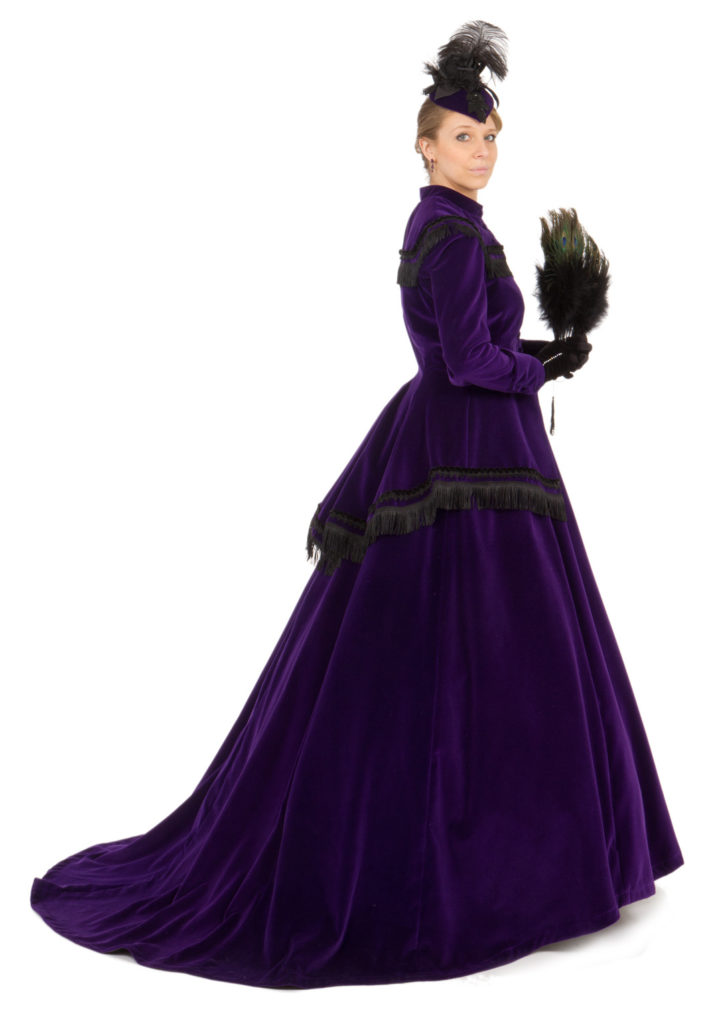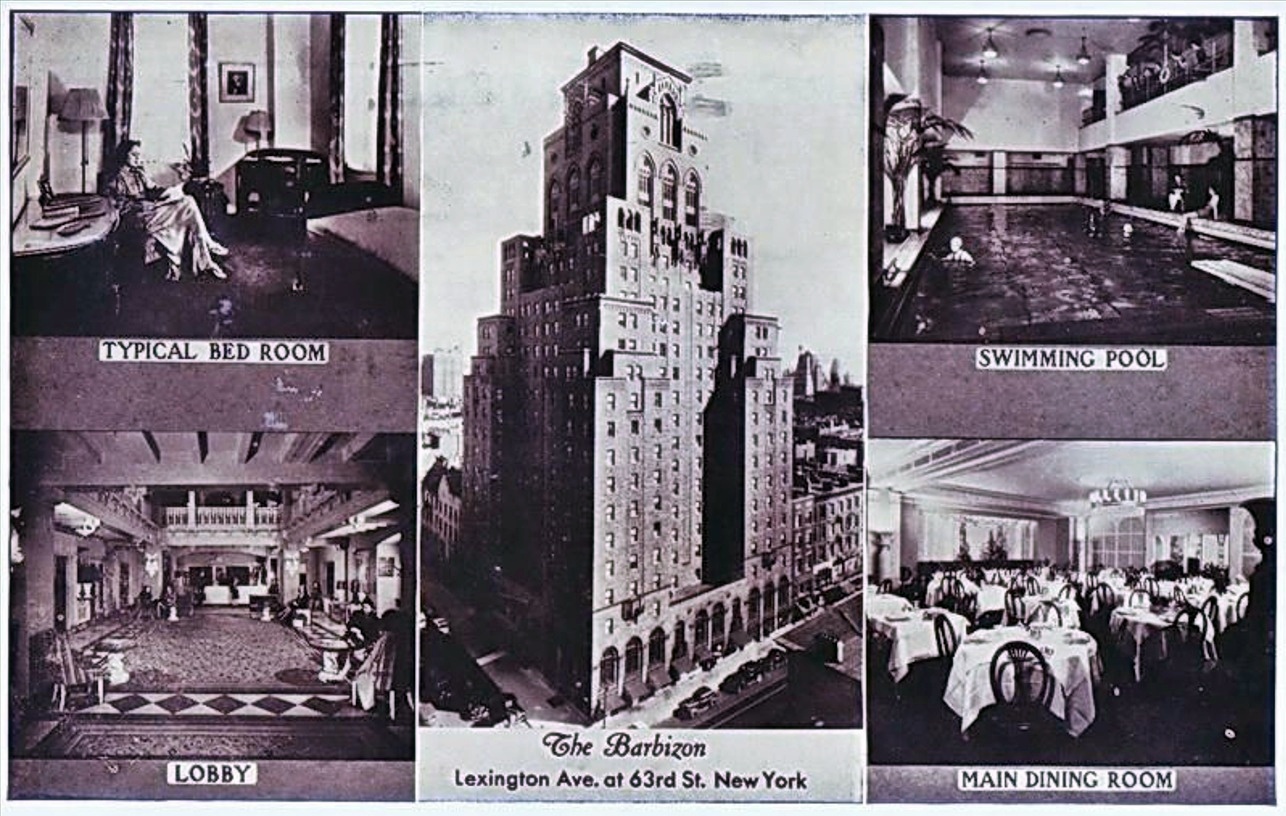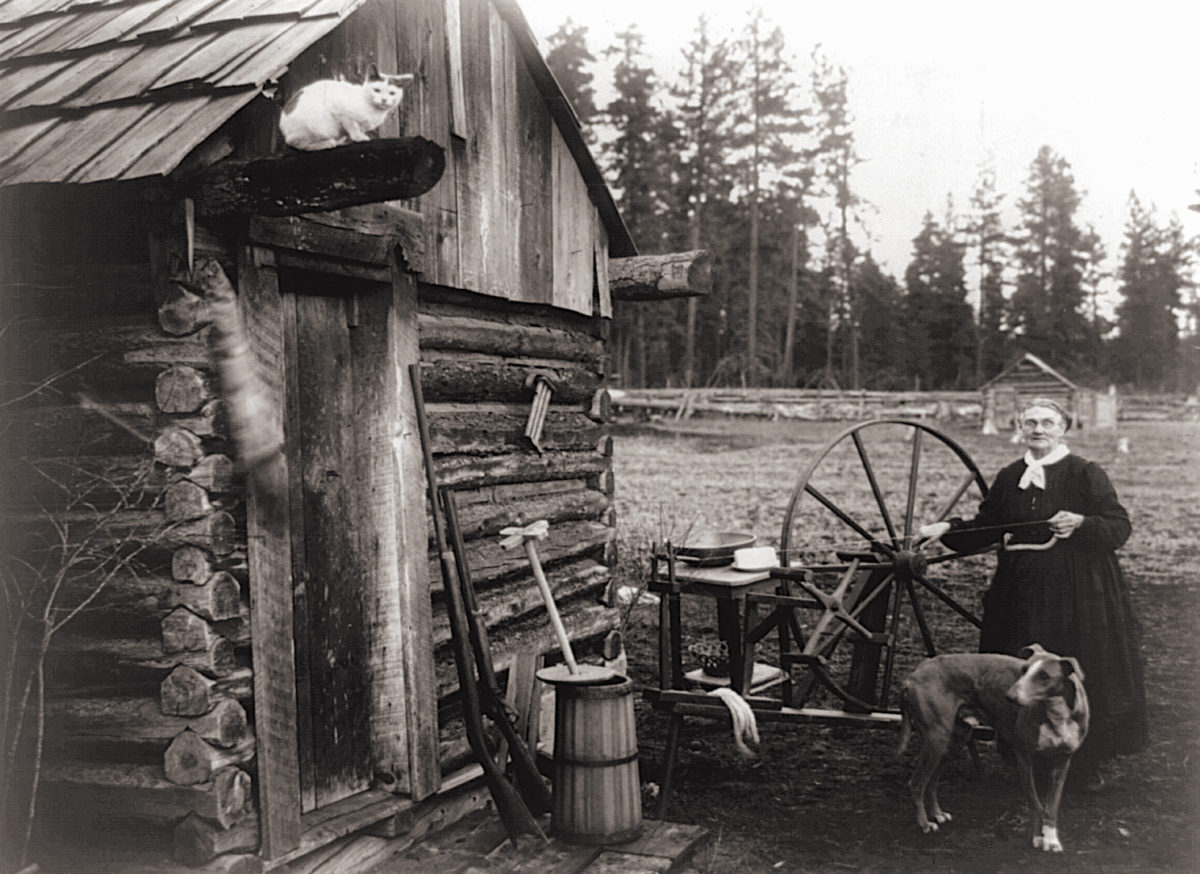Updated February 3, 2019
The groundhog has spoken and depending upon where you live, the prediction is either six more weeks of winter or early spring. Whatever way it turns out, there is definitely more winter to come. I started to think about what Victorian ladies wore during winter.
Winter Outer Garments
During the 1840s and 1850s, women’s gowns had wide puffed sleeves. The sleeves were so big that they would not fit into the sleeve of a coat. So, women wore a cloak, that loose outer garment resembling a cape.
By the 1870s garment sleeves were sleeker. Dolman jackets, coats, and capes gained popularity as outer garments. The shorter mantle of the 1880s featured a high cut back to make room for the corset, and long cut in the front to mimic a longer coat. On longer coats, the center back was open from waist to hem to accommodate bustles. Ties were sewn into the back waist so the center back of the coat fit tightly. The large roomy sleeves would be adorned with fringe or fur, and on occasion, feathers. By the 1890s, the jacket and sleeves were more form-fitting, much like a military tunic.

Shawls
Rich women often wore Kashmir shawls. Kashmir is a town in India where the wool, made from local goat fur, was produced. Another popular item was the Paisley shawl. They were often given as a wedding gift and were considered to be very fashionable. They were made of wool or silk with patterns woven in or printed on them. Most of these shawls were embellished with long fringe.
Muffs and Hats
Fur muffs were very popular during the Victorian era. During the early part of the Victorian era, ladies’ winter bonnets were often made of felt or animal fur. Bonnets gave way to hats by the late Victorian period. As hats got smaller, ears got colder! Winter hats were still decorated with fur, and toques were made of sealskin. The fedora hat was also a popular style of the Victorian era and offered some protection from the cold and snow.

Here are a few examples of winter wear from Recollections; Dickens Victorian Velvet Bonnet, Lucretia Victorian Set, and White Fur Muff.















Hi Cecilia,
I’m not entirely sure about the Australia fur trade, though I do know that the country was involved in the export of sea lion fur at one point. That being said, the UK made up a huge portion of the fur exports as well. I may consider doing a future post on the fur industry during Victorian times. Thanks for reading!
Did Australia ship Koala fur pelts to England during the 1880’s through the 1920’s? Many Australians blamed
Americans for the demise of the koala population. I don’t think America is responsible. The bush fires, coal mining, development, and climate change are to blame.
Layers of petticoats helped for warmth and to absorb the wet and mud. Lots of winter clothing was made from wool and/or silk (which keeps you warm during winter and cool during summer). Often the bottom of a skirt, such as a ruffle or a flounce, could be removed and replaced as needed.
Did they do anything to protect their long skirts from getting wet from the snow on the ground? I’m sure there were plenty who could not just stay inside, so how did they keep from getting soaked? Or did they just get soaked and deal with it?
Thank you, Jackie!
Hello, folks, I have an Historical Dressup Club here in Oregon we call ourselves Elegant Bustles & Bows Historical Costume Group of Central Point Oregon we are 2 years old and going strong…!!
We have all bought many gorgeous outfits etc. from Recollections!! And we get so many men that lean in close to us and tell me how they love our hats or our outfit!!! Our Motto for our Club is “ we Enjoy Putting Smiles on others faces…!!”
Thank you, The Lady of The Manor – Jackie
If it were possible I would wear garments from the late 1800’s. My hair is worn mostly Gibson girl style and just that alone men open doors for me and call me My lady. Just goes to show you how men reacted to a feminine woman back in the day.
Thanks I used this information for a social studies project I am in seventh grade and my topic is Fashion during the Mid Victorian time period
Very interesting!